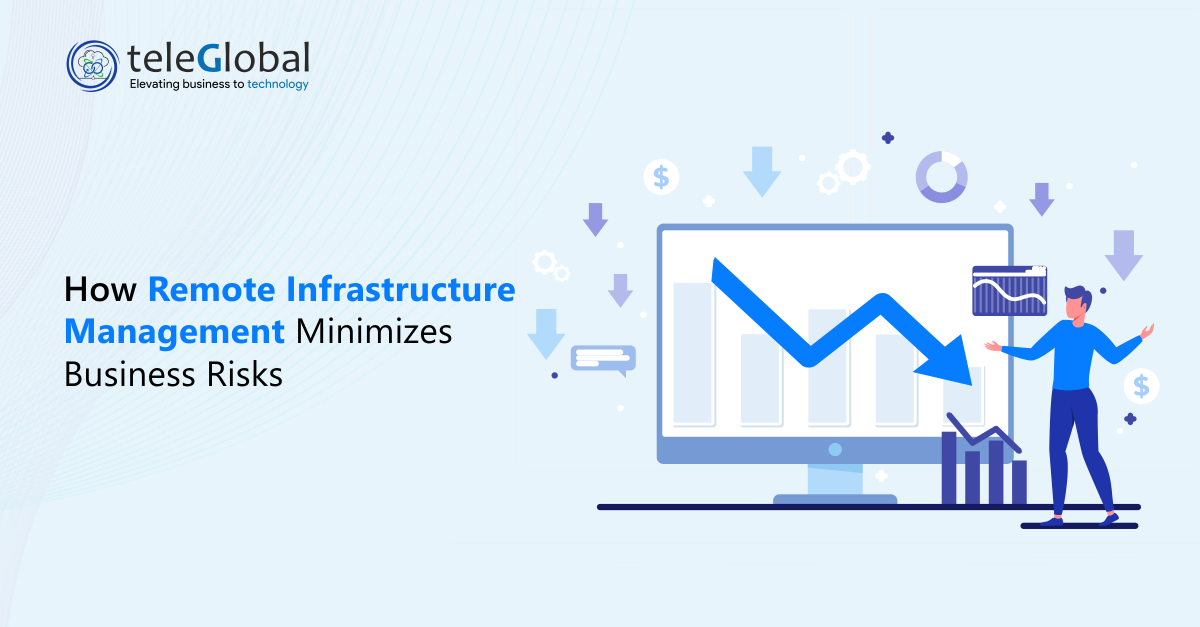
| Author: Abhinita Singh | Published: 12-Jun-2024 |
As businesses continue to depend on digital platforms for communication operations and data handling, IT management has become a crucial part of maintaining stability and growth. When systems fail or security is compromised, the financial and reputational risks can be severe. Managing all aspects of IT internally can be time-consuming expensive and sometimes inefficient.
This is where Remote Infrastructure Management proves to be a practical and powerful alternative. By relying on external IT experts to manage infrastructure remotely, businesses reduce operational risks, improve system reliability and free internal resources for innovation and growth.
Remote Infrastructure Management refers to the process of monitoring maintaining and securing IT infrastructure from an offsite location. This includes servers applications databases networks and cloud resources. Remote Infrastructure Management offers real-time visibility over your systems automates issue detection and enables timely resolution without requiring a physical presence.
A modern remote infrastructure management system typically integrates monitoring dashboards automated alerts performance optimization and access control measures.
Constant visibility into system performance is one of the most effective ways to prevent outages. Remote IT infrastructure monitoring provides early detection of unusual activity hardware failure or traffic surges. Businesses receive alerts and logs which allow them to respond quickly and avoid service interruptions.
Security threats have grown more sophisticated and frequent. Remote Infrastructure Management includes continuous threat monitoring regular patching access control updates and active detection of vulnerabilities. This ensures a stronger security posture and reduces the likelihood of breaches.
It also protects remote desktop software ensuring that connections remain encrypted user access is controlled and session activity is logged securely.
Managing an internal IT department involves high fixed costs including staff salaries hardware software and tools. Remote Infrastructure Management offers predictable subscription-based pricing models that scale with business needs. Organizations pay only for what they use leading to better resource utilization.
This approach eliminates the need for overprovisioning while still ensuring reliable access to critical services.
As businesses expand their infrastructure must scale accordingly. Remote Infrastructure Management supports this by providing flexible capacity on demand. Whether a business needs more storage bandwidth or user access it can be provisioned quickly through a managed service provider without disrupting operations.
Providers also help manage remote desktop software and ensure teams stay productive even in distributed work environments.
Unexpected failures natural disasters or cyberattacks can cause severe disruptions. With Remote Infrastructure Management data is backed up systems are monitored and disaster recovery plans are pre-defined and tested. When incidents occur businesses can restore systems and data quickly avoiding long periods of downtime.
Many industries must meet strict compliance regulations including data privacy and operational transparency. Remote Infrastructure Management includes automated reporting log management and security controls that help businesses meet these requirements.
It ensures that audits are less stressful and that businesses stay prepared for changing regulatory environments.
RIMs in IT stands for Remote Infrastructure Management services. These services are designed to handle the full spectrum of IT infrastructure from monitoring and maintenance to incident response and system updates. They are commonly used by businesses seeking reliable cost-efficient IT operations without building an internal team.
Remote desktop software is essential for supporting users across various locations. It allows technicians to access troubleshoot and update systems without physical presence. The best remote desktop software offers fast and secure access session logging multi-device compatibility and central management.
This is a core feature in any remote infrastructure management system and directly supports operational continuity.
The remote infrastructure management market continues to grow rapidly. In 2024 it is estimated to be valued at over 42 billion US dollars and is expected to surpass 90 billion US dollars by 2030. This growth is driven by the rising demand for secure scalable IT services that support hybrid and remote work models.
As more businesses shift to the cloud and seek to reduce IT complexity Remote Infrastructure Management is being adopted across industries such as finance healthcare education and retail.
Businesses that attempt to manage infrastructure without external support often face preventable challenges including downtime security breaches and rising costs. Remote Infrastructure Management provides an effective solution by offering expert-level oversight proactive system management and continuous improvement.
At Teleglobal we deliver reliable and scalable Remote Infrastructure Management solutions that help businesses reduce risk and improve infrastructure performance. Our team ensures that your IT environment remains secure available and aligned with your goals. Get in touch with us to explore how we can support your growth through efficient IT operations.
Remote Infrastructure Management is the process of managing IT systems and infrastructure including servers networks and applications from an offsite location.
RIMs stands for Remote Infrastructure Management services These are professional services that manage monitor and support IT infrastructure remotely.
A remote infrastructure management system is a platform that provides tools for monitoring automation access control and support for IT infrastructure.
The best remote desktop software offers encrypted access fast performance and multi-platform support and integrates with broader IT management tools.
It ensures systems are regularly updated secured and documented making it easier to meet industry regulations and audit requirements.
The Remote Infrastructure Management market is valued at over 42 billion US dollars in 2024 and is expected to grow beyond 90 billion US dollars by 2030 reflecting the increasing need for scalable remote IT support.
